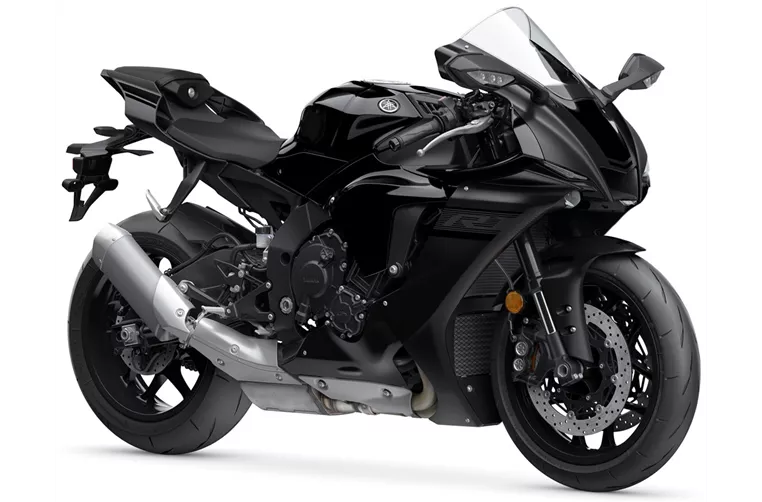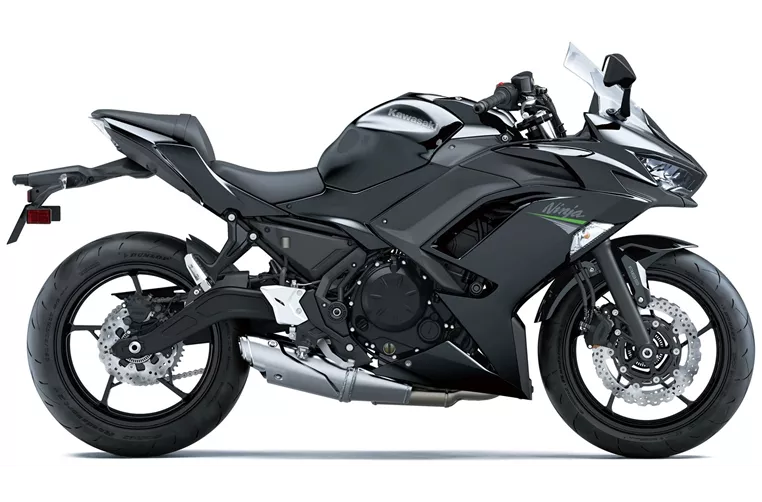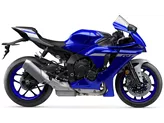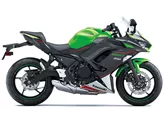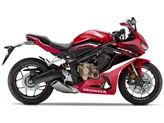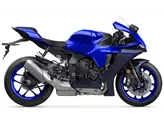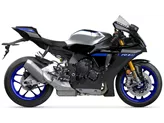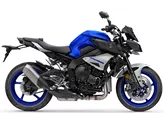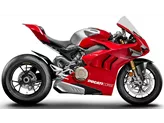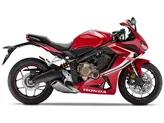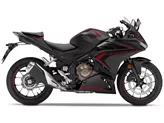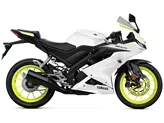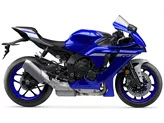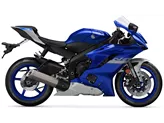Yamaha R1 2020 vs. Kawasaki Ninja 650 2020
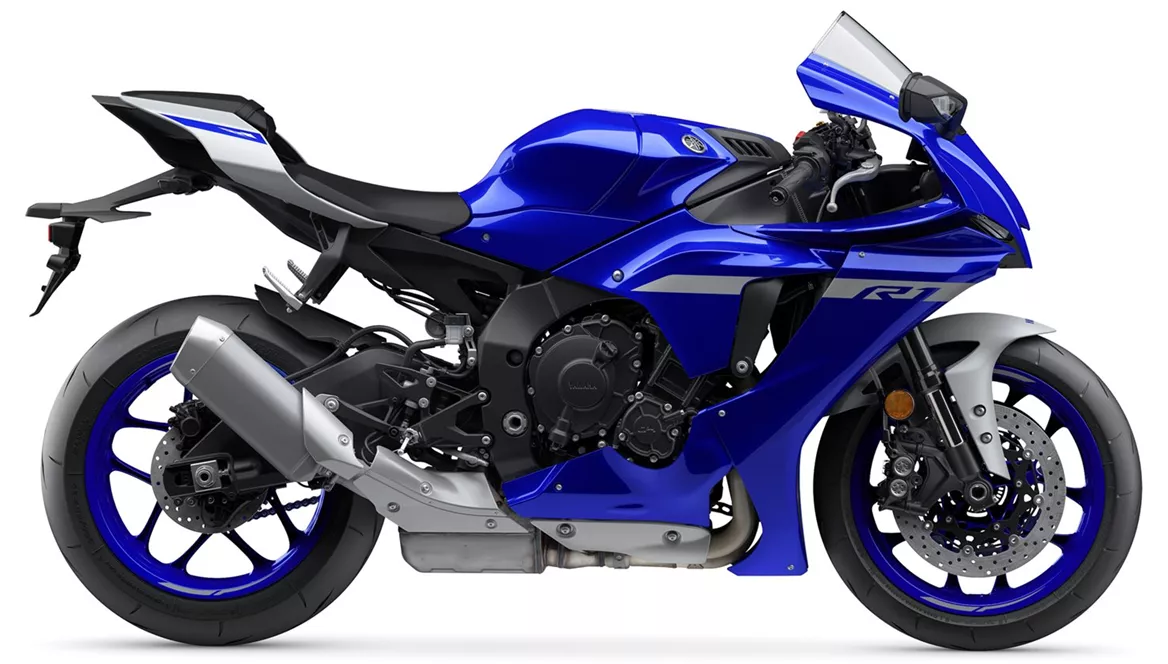
Yamaha R1 2020
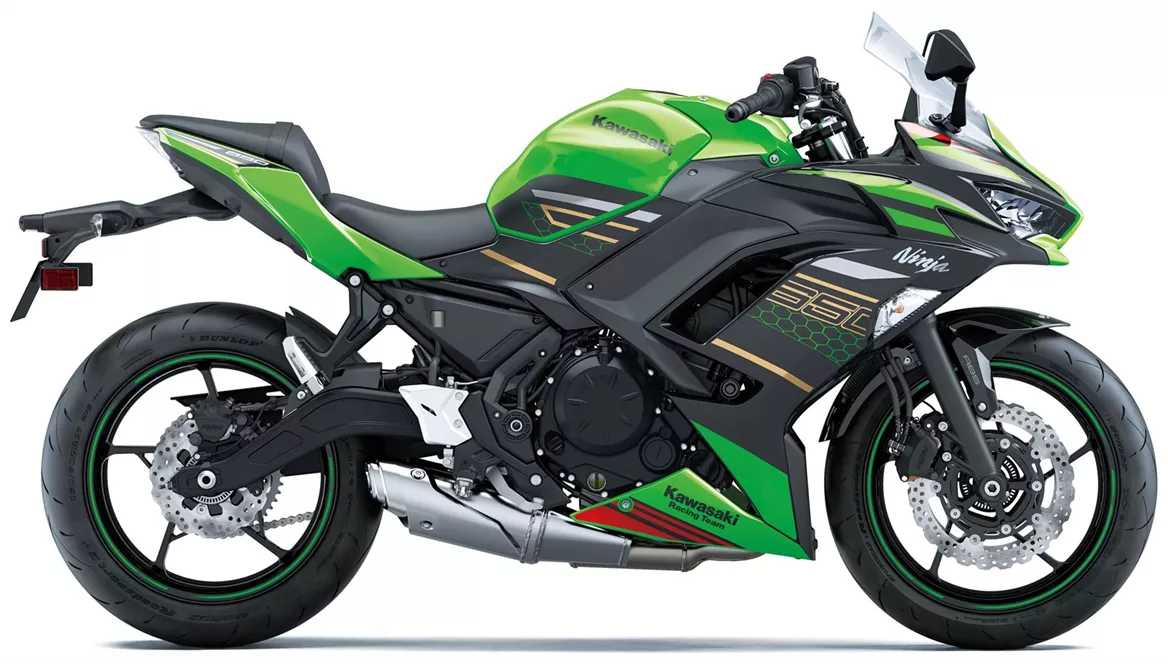
Kawasaki Ninja 650 2020
Vue d’ensemble - Yamaha R1 2020 vs Kawasaki Ninja 650 2020
The Yamaha R1 model year 2020 is a supersport motorcycle that boasts a powerful engine with a bore of 79 mm and a stroke of 50.9 mm. It delivers an impressive engine power of 200 HP and a torque of 112.4 Nm. With a compression ratio of 13 and four cylinders, the R1 offers a thrilling riding experience. The DOHC valves with four valves per cylinder ensure efficient combustion and optimal performance. The displacement of 998 ccm provides ample power for exhilarating acceleration.
In terms of suspension, the Yamaha R1 features an Upside-Down telescopic fork at the front, which enhances stability and control during aggressive riding. The aluminium frame, known as Deltabox, provides a lightweight yet rigid structure, contributing to the bike's overall stability and handling. The double disk front brakes offer reliable stopping power, ensuring safety even at high speeds.
The Yamaha R1 is equipped with advanced rider assistance systems such as Launch-Control and Traction Control, which enhance the bike's performance and safety. These systems help riders maintain control and prevent wheel spin during acceleration.
In terms of dimensions and weights, the R1 has a front tyre width of 120 mm and a diameter of 17 inches, while the rear tyre has a width of 190 mm and a diameter of 17 inches. The wheelbase measures 1405 mm, providing stability and agility. The seat height is 855 mm, which may be a bit high for shorter riders. The kerb weight, including ABS, is 199 kg, making it a relatively lightweight option in its class. The fuel tank capacity is 17 liters, offering a decent range for long rides.
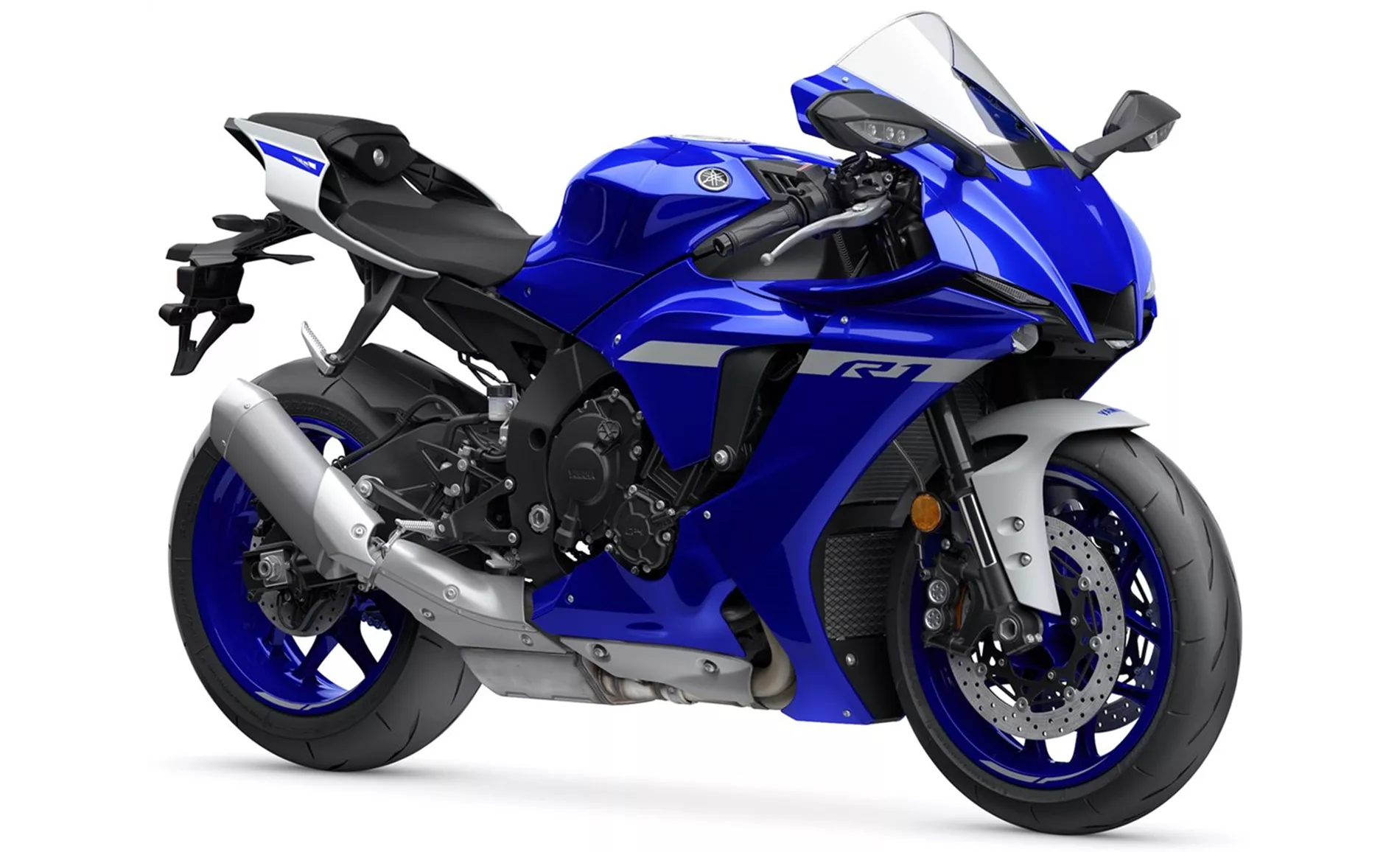
Yamaha R1 2020
The Yamaha R1's strengths lie in its powerful engine, clean response, and great sound. The stable chassis and high-quality electronics contribute to its overall performance. Additionally, the bike exudes a wonderfully noble impression, adding to its appeal.
On the other hand, the Kawasaki Ninja 650 model year 2020 is a supersport motorcycle with a two-cylinder engine. It has a bore of 83 mm and a stroke of 60 mm, delivering an engine power of 68.2 HP and a torque of 65.7 Nm. The compression ratio is 10.8, and it also features four valves per cylinder with DOHC technology. The displacement is 649 ccm, providing sufficient power for an enjoyable riding experience.
The Kawasaki Ninja 650 features a telescopic fork front suspension, which offers a comfortable ride and good handling. The steel frame, known as Tubular, provides a sturdy and reliable structure. The double disk front brakes ensure efficient stopping power, enhancing safety on the road.
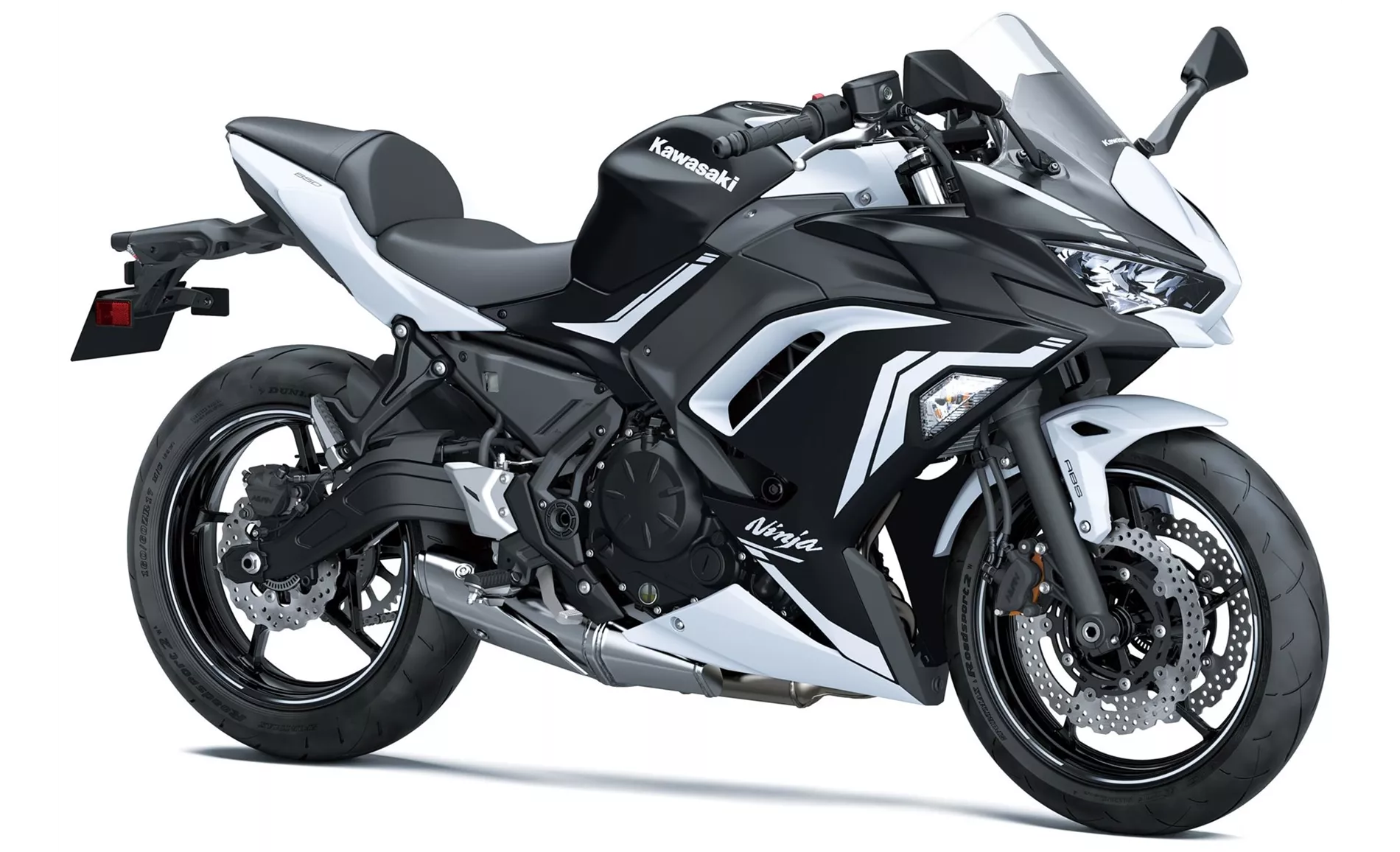
Kawasaki Ninja 650 2020
The Ninja 650 is equipped with ABS as an advanced rider assistance system, offering additional safety and control during braking. The front tyre width is 120 mm, and the rear tyre width is 160 mm, both with a diameter of 17 inches. The wheelbase measures 1410 mm, providing stability and maneuverability. The seat height is beginner-friendly at 790 mm, making it accessible for riders of different heights. The kerb weight, including ABS, is 193 kg, making it relatively lightweight for its class. The fuel tank capacity is 15 liters, which may require more frequent refueling during long rides.
The strengths of the Kawasaki Ninja 650 include its powerful two-cylinder engine, comfortable seat suitable for touring, and compact dimensions. The bike also features a sporty look and a TFT display with connectivity, adding to its modern appeal.
However, the Ninja 650 has some weaknesses. It may feel too dainty for taller riders, and the front brake pressure point may not be optimal for some riders. Additionally, the bike has limited suitability for touring with two people.
In conclusion, both the Yamaha R1 2020 and the Kawasaki Ninja 650 2020 offer unique features and strengths. The Yamaha R1 excels in terms of power, performance, and overall impression, making it a top choice for riders seeking a thrilling and high-performance supersport motorcycle. On the other hand, the Kawasaki Ninja 650 offers a more comfortable and beginner-friendly riding experience, with its powerful two-cylinder engine and touring capabilities. Ultimately, the choice between the two will depend on the rider's preferences and intended use of the motorcycle.
Caractéristiques techniques Yamaha R1 2020 par rapport à Kawasaki Ninja 650 2020
Avantages et inconvénients en comparaison
Avantages et inconvénients en comparaison
Yamaha R1 2020
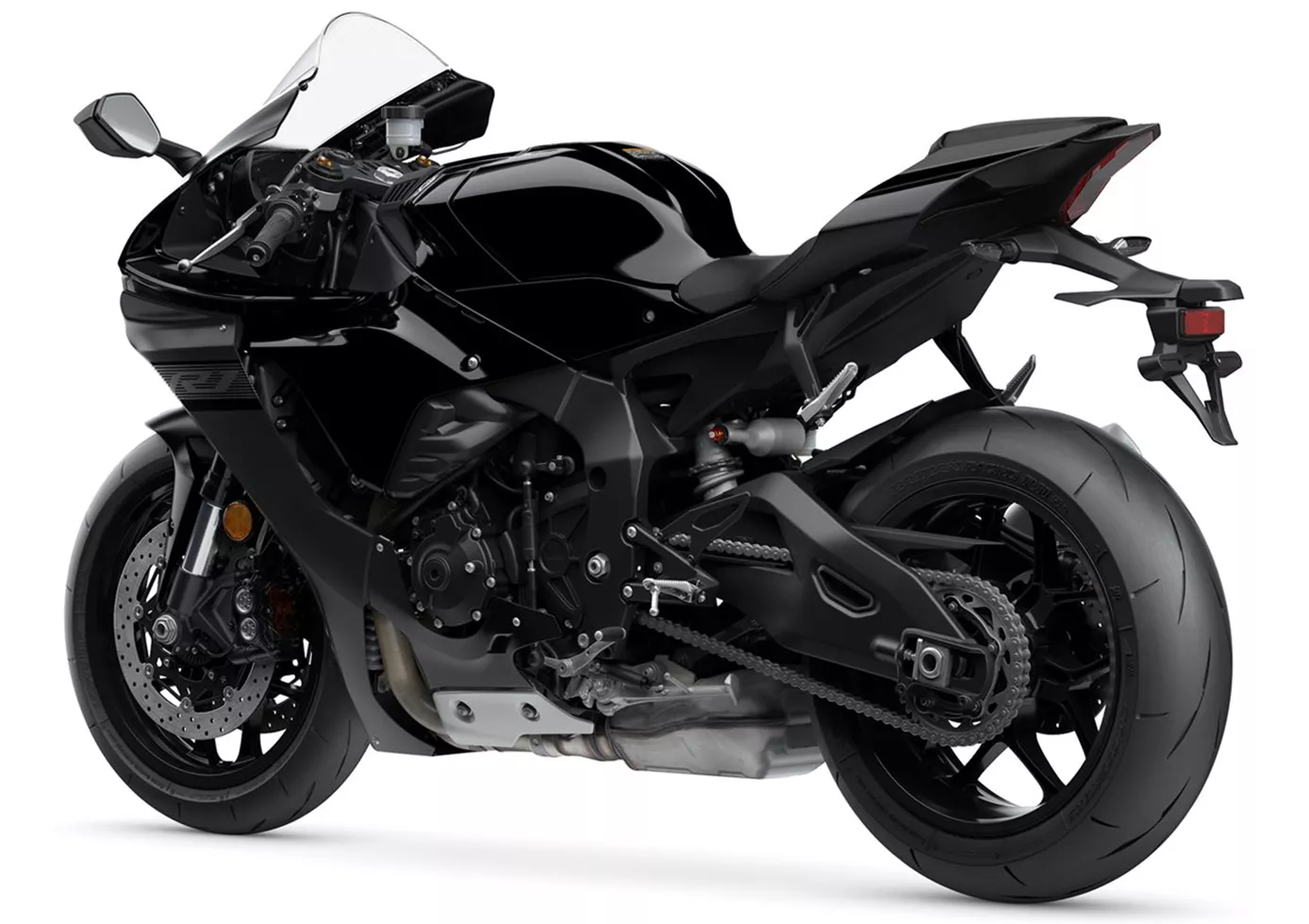
La Yamaha YZF-R1 est arrivée à maturité et fait le bonheur d'innombrables pilotes de circuit. Le moteur brille par sa légèreté et son agilité, la position de conduite surprend positivement et la maniabilité est radicale mais toujours "adaptée à la masse". La machine attire immédiatement l'attention par son aspect et aussi par sa sonorité qui fait chaud au cœur. C'est surtout sur les routes de campagne que la moto marque des points avec les atouts qu'on lui connaît : super moteur, super électronique, super ensemble ! Un vrai plaisir de conduire !
Kawasaki Ninja 650 2020
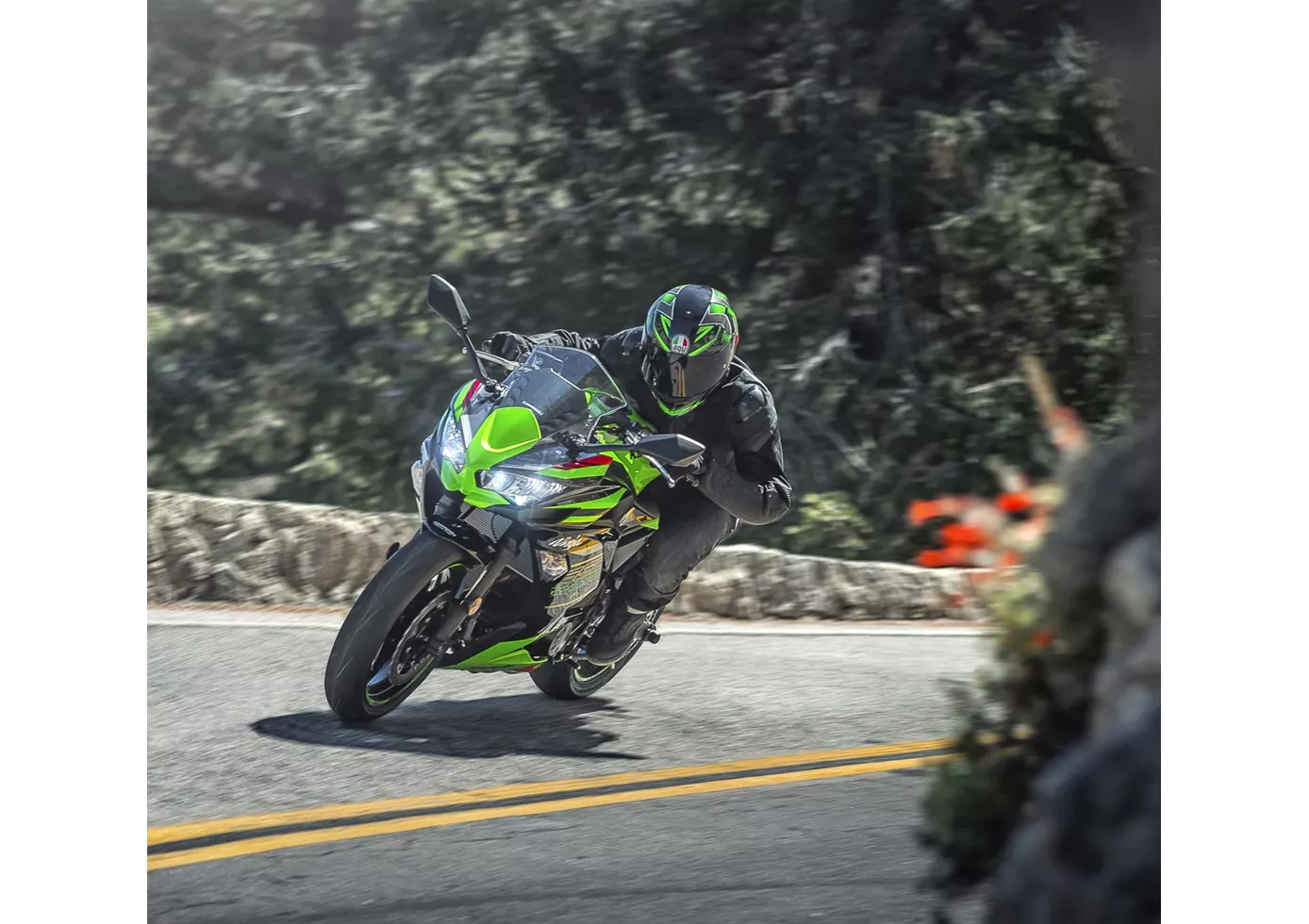
Sauvez les motos de tourisme sportif ! Kawasaki réalise avec la Ninja 650 une représentante exemplaire de cette catégorie et veille ainsi (espérons-le) à résoudre le problème de la relève. Le châssis stable et le bon bicylindre enthousiasment aussi bien les débutants que les pilotes confirmés, même à un rythme plus soutenu. Le frein avant a été un peu trop bien pensé : malgré une bonne puissance de freinage, il manque un point de pression transparent. Le plus est l'écran TFT, que nous ne trouvons pas encore chez la concurrence, ainsi que le look adulte qui s'oriente fortement vers les modèles Ninja plus grands.
Comparaison des prix Prix moyen du marché Yamaha R1 vs Kawasaki Ninja 650
There are a few key differences between a Yamaha R1 2020 and a Kawasaki Ninja 650 2020. In terms of price, the actual average price of a Yamaha R1 2020 is about 202% higher. Compared to Kawasaki Ninja 650 2020 there are less Yamaha R1 2020 bikes available on the 1000PS.de Marketplace, specifically 9 compared to 10. It takes less time to sell a Kawasaki Ninja 650 with 75 days compared to 86 days for the Yamaha R1. Since model year 2005 1000PS.de editors have written 80 reviews for the Yamaha R1 and 20 reviews for the Kawasaki Ninja 650 since model year 2017. The first review for the Yamaha R1 was published on 4/28/2003 and now has more than 3,900 views. This compares to more than 79,600 views for the first review on Kawasaki Ninja 650 published on 10/4/2016.
